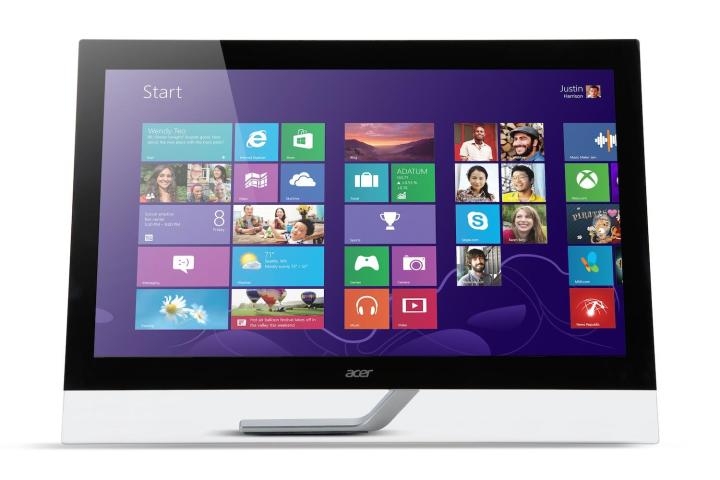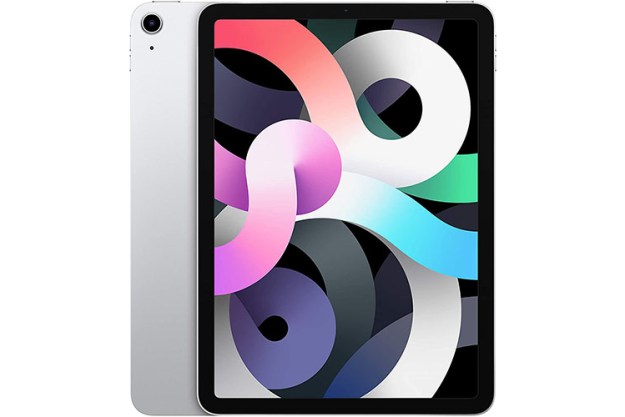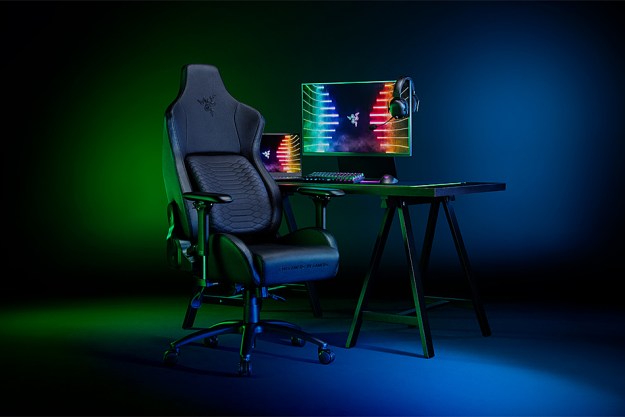
Tablets and laptops aren’t the only places getting the touchscreen treatment. More and more manufacturers are adding touchscreens to their monitors, including Acer, who released a trio of high-resolution, touch-enabled monitors yesterday.
The LED displays differer in quality, from the consumer-oriented 27-inch T272HUL with 10-point touch and an ergonomic stand, to the 27-inch B276HUL and 29-inch B296CL displays geared towards consumers and professionals. All three monitors offer viewing angles up to 178 degrees horizontally and vertically

Acer T272HUL
The T272HUL (pictured above), offers an impressive 2,560 x 1,440 pixel WQHD resolution. Aware that monitors aren’t just to be hidden among a crowded desk, Acer designed the T272HUL with an asymmetrical stand that should appeal to any design-conscious PC user.
The stand doesn’t just look good; it also serves a purpose. Users can view images tilted back from 30 to 80 degrees, which Acer says is “practically flush with the desk for enhancing comfort and ergonomics.” Acer sees the tilt feature as something that’ll be helpful in playing games, viewing photos and cookbooks, and surfing the Web.
The nice thing about having a Windows 8-compliant touchscreen monitor is that even if you have an old, non-touch laptop that you updated to Windows 8 (or if you wait until October, Windows 8.1), you’ll be able to use the monitor to use Windows 8 as it was intended: Touchified. As for ports, it has a VGA, DVI, HDMI, and USB 3.0 (one up and two down). The T272HUL will be available in late August for $1,000.
Acer B276HUL and B296CL
As for the other two monitors, which are non-touch, the 27-inch B276HUL has a WQHD 2,560 x 1,440 pixel resolution display, and 29-inch B296CL has a 2,560 x 1,080 pixel resolution display. Both monitors have some pretty clever features, including a release button to detach it from its stand and hang it on the wall, a magnetic surface on the base of the stand for paper clips, and a storage tray for any other small office supplies.
But those features are just the icing on the cake compared to what the multi-function ErgoStand can do. Tilting, swiveling, pivoting, and adjusting height are all options with these monitors. The displays can be pivoted 90 degrees clockwise, enabling you to view more of your Twitter feed at once when in portrait mode. In the high position, they can be tilted back from -5 degrees to 35 degrees, and in the low position, from -5 degrees to 25 degrees. It also offers a 120-degree swivel to provide more viewing angles.
Port-wise, the monitors come with DVI-D (dual link), two HDMI, DisplayPort, and USBO 3.0 (one up and four down). They offer 16.7 million colors, and a 6 ms response time for the B276HUL and 8ms for the B296CL.
These monitors will start at $600 and are available now. Stay tuned for our full reviews.
Editors' Recommendations
- Dell’s new UltraSharp monitors have one major innovation
- Acer’s new Nitro XZ2 curved gaming monitor is insanely cheap




